Historical Architecture of Grosse Pointe – Welcome to 735 Lake Shore

Last week we explored one of Grosse Pointes lost estates, 17100 E. Jefferson, a magnificent home designed by the firm of Trobridge & Ackerman for Dexter M. Ferry Jr., in 1915 – demolished in 1959.
This week we would like to present another superb home that has been lost – 735 Lake Shore, created by Albert Kahn in 1930, for Alvan Macauley. The home was one of the architectural masterpieces that were constructed on the shores of Lake St. Clair during the golden era of stately mansions. It was one of the ‘stand out’ estates on Lake Shore Drive. But, like so many of them demolished to make way for a subdivision.
The grand Tudor inspired home was located on 52 acres (20 acres were in Grosse Pointe Woods). The estate stretched from Lake Shore to Lochmoor Country Club. At the time this was arguably one of the largest lots found in Grosse Pointe. It was similar in both construction and appearance to the Ford Estate, which had been completed a year earlier in 1929, also by Kahn. The same Cotswold traits were incorporated into the Macauley’s new home, a style that was becoming a familiar sight in many of the large Tudor manor homes being constructed around Grosse Pointe. From research in ‘Buildings of Detroit’ by W. Hawkins Ferry, the Macauley’s were particularly fond of the Tudor and Cotswold styles. Prior to the building of their new residence they had spent several weeks in Worcestershire, England, studying the local architecture, along with purchasing some fine English Antiques. Image courtesy of: www.cca.qc.ca
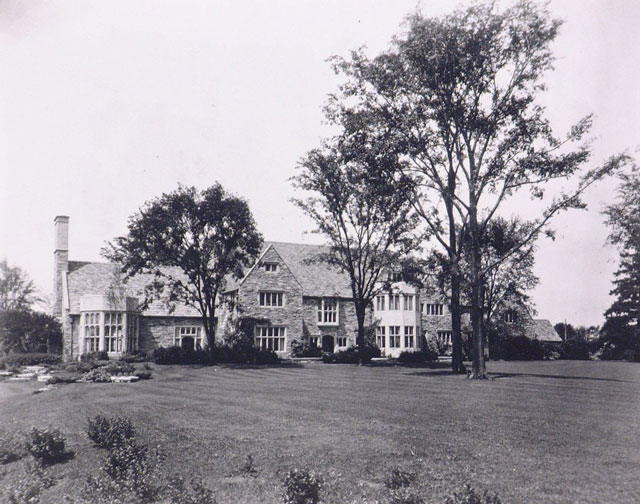

The exterior of the home was constructed from stone, with the roof constructed from slate. It is believed the walls were 17” thick. Meticulous attention to detail was paid to the construction of the house, which was completed under the careful supervision of a foreman from the Cotswold region of England. The interior was exquisite, and filled with an abundance of wood, including beautiful intricate carvings by the Hayden Company of New York. The paneling in the grand 45’ x 25’ sq ft living room, which occupies an entire wing, combines a medieval linenfold motif with later Renaissance ornament – source: Buildings of Detroit, by W. Hawkins Ferry. The ceiling was also particularly striking, as depicted in the photo below (image courtesy of atdetroit.net). The 22’ x 22’ sq ft square dining room was sublime, with a large bay window providing perfect views of the lake.
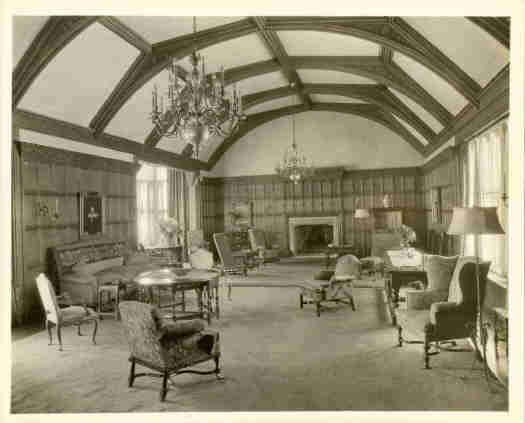

As the floor plans below clearly demonstrate the mansion was long (195’) and quite narrow. The second floor featured five large bedrooms along with four smaller bedrooms (possible for servants), and a 25’ x 18’ sitting room, with a bay window. A large terrace provided stunning views over the garden and toward the lake. In addition to the house it would appear additional servants quarters were located above the five-car garage, which featured two apartments, each containing a living room, kitchen, two bedrooms and a bathroom.
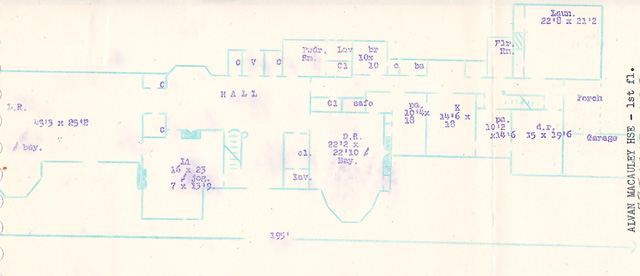
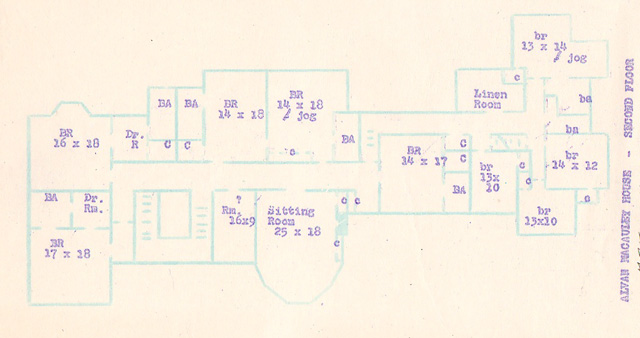


In keeping with the other grand mansions in the community the garden received a lot of attention. Macauley hired landscape architect Edward A. Eichstaedt to create a design in keeping with the characteristics of the home. Eichstaedt utilized the natural terrain ‘emphasizing the broad unhampered areas bordered with native trees and shrubs’ – source: Buildings of Detroit, by W. Hawkins Ferry.
Alvan Macauley was a very prominent figure in Detroit. Having grown up in Washington D.C. he graduated with degrees in both engineering and law (from Lehigh University in Pennsylvania, and George Washington University, respectively). While working for the Burroughs Adding Machine Company, Macauley was hired by Henry Bourne Joy in 1910 as general manager of Packard, becoming president of the company in 1916. Macauley was in charge of Packard during its golden era when the company was the leader of the luxury car market. He also had to steer the company through the devastating results of the Great Depression, which he did, in part, by hiring a team of engineers to create a car that sold for $980 ($650 less than any Packard car). It was a resounding success and helped ensure Packard was financially stable by the late 1930’s. Source Wikipedia. Packard’s were a regular site outside of his residence. Images courtesy of: https://digitalcollections.detroitpubliclibrary.org
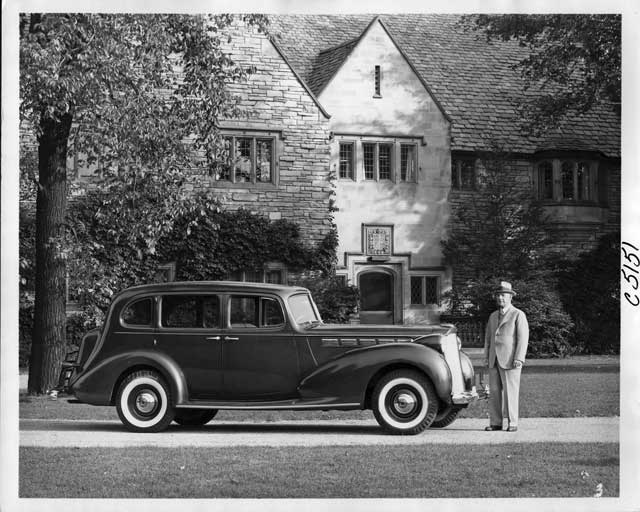



Alvan Macauley resigned from his position at Packard, as president, in 1939, however he remained chairman of the board until 1948 (Source: Wikipedia). He died in Clearwater, Florida in 1952. That same year his wife, Estelle, and their three children sold 735 Lake Shore. It was listed for $225,000 (around $2.1 million today), and purchased, also in 1952, by Alfred R. Glancy, a real estate financier and former co-owner of the Empire State Building (he and Roger L. Stevens purchased the building, in 1951, for $51.5 million and sold it three years later at a profit. Source: www.nytimes.com).
The Glancy’s resided in the home for twenty-one years with their five children. In 1973 two men reportedly broke into the home badly beating Mr. Glancy. He sadly died of his injuries. He was 65 years old. In 1974 Mrs. Glancy sold the mansion and what was left of the estate (believed to be only a third in size of what Mr. Glancy had originally purchased in 1952) – the house was subsequently demolished that same year. A new home now exists at 735 Lake Shore, on a 110 x 321 sq ft lot, while the remainder of the estate is now the location of the Belle Meade subdivision.
*Photos courtesy of the Higbie Maxon Agney archives unless stated.
Written by Katie Doelle
Copyright © 2019 Katie Doelle

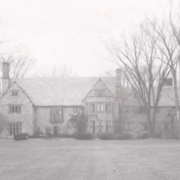
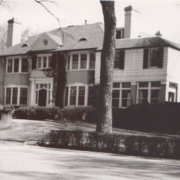
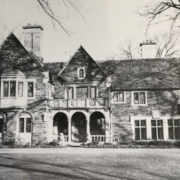
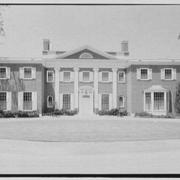

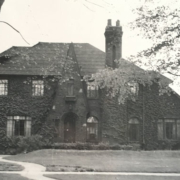

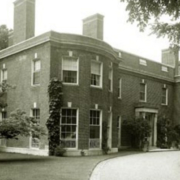
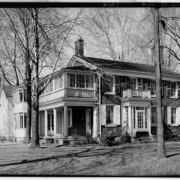
Leave a Reply
Want to join the discussion?Feel free to contribute!